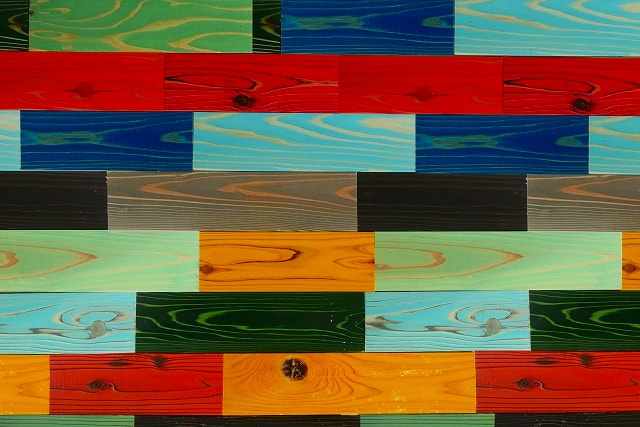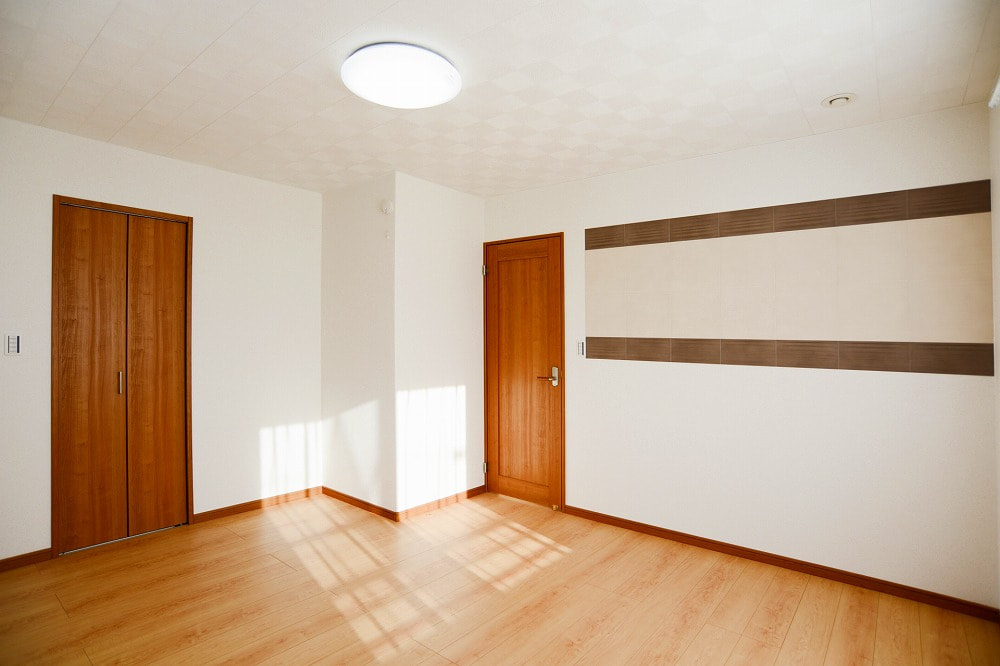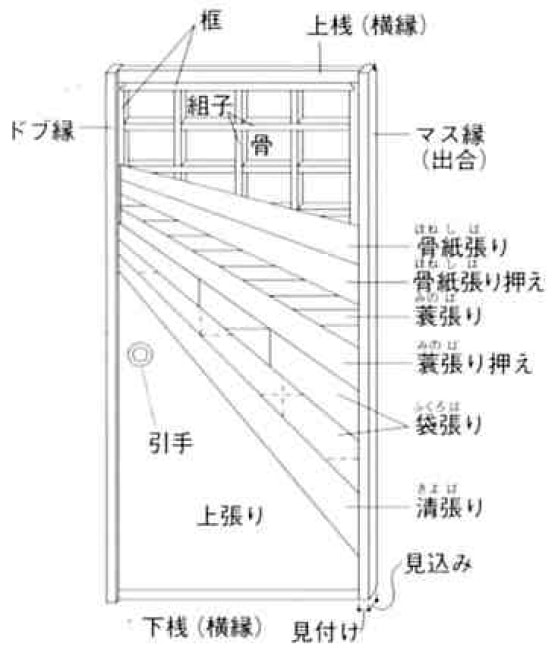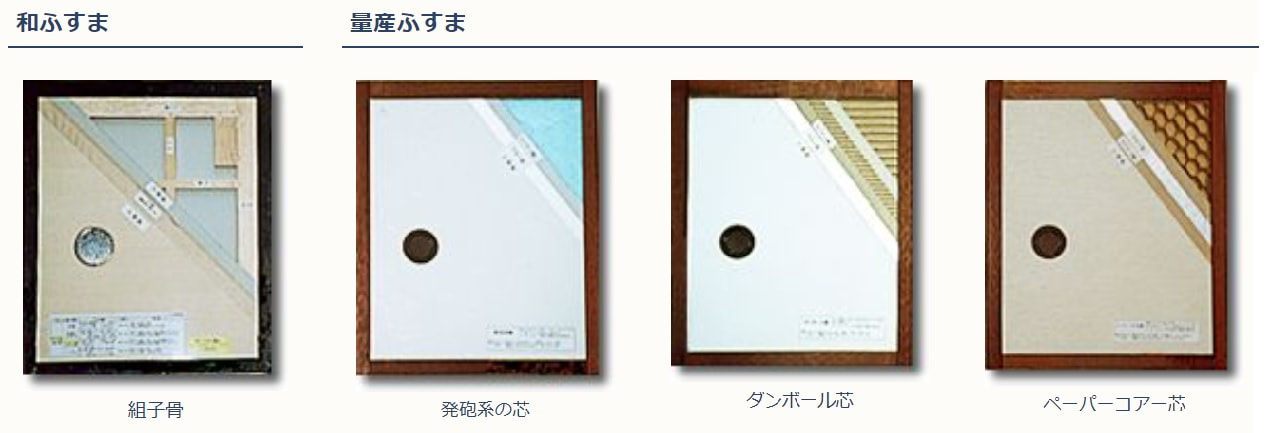You can still do DIY in a Rental. What is the Key to Actually Doing DIY?DIY stands for "Do It Yourself," which means to make your own furniture and decorations. DIY is popular among women as well as men because it allows you to change a room into a space of your choice on a low budget, but many people may have the image that DIY is difficult to do in a rental house. However, with a little ingenuity, it is possible to do DIY in a rental property. In this article, we will introduce in detail the points to keep in mind when doing a do-it-yourself project in a rental house, and actual DIY examples, with explanations. You can DIY in a rental house.It is possible to enjoy DIY in a rental home with some creativity. For example, if the furniture is already in use, it belongs to you, so you can do whatever you want with it without damaging the room. Just remaking the furniture you have on hand can change the atmosphere of the room, and one of the appealing aspects of DIY is that you can change it to make it more user-friendly for you. If you want to change the wallpaper, there are easy to use wall stickers that you can put up and peel off, easy to try out such as masking tape, or even peel-off wallpaper that can be used on the entire wall. There are also wallpaper sheets that can be painted over. These products can be restored to their original state without damaging the wallpaper when they are removed, so they can be used in a rental house without any worries. In addition, if you have an inset floor mat, it has an absorbent backing and can change the look of your floor simply by placing it without the use of glue. Cushioned floor mats are convenient for protecting the floor at the same time. They come in a variety of patterns and materials and can be changed to suit your taste and mood. In addition, there are also tile sheets that can be used around the water, glass film for windows, and many other products on the market depending on the purpose and location. What to Look for When Doing a DIY Project in a Rental HouseThere are a few things to keep in mind when it comes to actually doing a DIY project. The first thing you want to pay attention to in order to do a DIY project in a rental house is that the work should be done to the extent that it can be restored to its original condition. Restoration means that the property must be returned to its original condition when you move out. If you damage a wall or floor in the process of DIY, you may have to pay for the repair, so please be careful. It is also important to abide by the management rules of the apartment or condominium and carry out the work. Be sure to check with your landlord before doing any DIY work, including the matter of restoration of the original condition. During DIY construction, you may end up causing problems for neighbors with noise and other disturbances. If you are in a housing complex, one way to avoid this problem is to use a material cutting service at a home improvement center or a workshop for buyers. You can also rent tools and equipment here, and you can work without worrying about dust and noise. If you work at home, make sure you do it at a sensible time. DIY PracticeSo what are some of the actual DIY's you can do in your rental home? Here are a few examples to get you started. Wall Redecoration If you want to make a big change in the atmosphere of a room, you can redecorate the walls. If you don't use strong adhesives, you can redecorate your walls without damaging them. As we touched on a little earlier, decorating your walls with peel-off wall stickers or masking tape is an easy way to redecorate. There are many different types of stickers available for use on a point instead of the whole wall, so you can make a big difference in the impression you make. If you want to redecorate an entire wall, use peel-off wallpaper. It can change the entire wall, which can significantly change the atmosphere of the room. If you want to apply paint directly, you can achieve this by using peel-off wallpaper sheets for paint. Other popular options are to put up styrofoam walling like bricks or to install thin boards as temporary walls to create your own arrangement. Floor and Balcony One of the most popular floor redecorating solutions is a built-in floor mat. There are many different types of floor mats available, including flooring mats and carpet mats, which you can easily redecorate simply by placing them on the floor. Many of them have a non-slip surface on the back of the floor mat, which prevents them from sliding around in your daily life and is easy to remove. Some of those floor mats are washable, so they are clean and easy to use. Another type of floor mat is the sheet type, which can be cut into any size and placed on the floor without any gaps. There are also balcony floor coverings that can be placed on balconies for easy redecoration. There are many different types of floor coverings available, with natural wood and artificial grass being the most popular. There are also fences that you can simply assemble, and some of them can be used to decorate with pots for gardening and other purposes. Kitchen The kitchen area is a popular DIY project, especially when it comes to efficiency and functionality. When doing a DIY project, be sure to plan ahead to improve the usability of your kitchen. You can also use propped-up shelves or propping rods to provide more storage or a workbench. Water-resistant, peel-off stickers and wallpaper are great for redecorating kitchen walls and shelves. Not only do they change the look and feel of your kitchen, but they also prevent grease splatters and stains from sticking to your walls. Rental properties for DIY With more and more people doing DIY, a new type of rental property called a do-it-yourself lease has begun to emerge. These properties are based on the premise that the tenant is free to do their own DIY, and in exchange for the tenant paying for the work, the rent is cheaper than usual, among other advantages. Whether the work is done by a contractor or by the tenant themselves, you can rent the property without any problems. This is a great option for those who want to do some serious DIY work without having to worry about damaging the walls and floors. Choose a property that matches your level of DIY. It is possible to do some DIY in a rental property with some creativity, but it has to be done within a set scope. If you want to make a big change in the image of a room or if you want to try a real DIY project, you have the option of choosing a DIY-ready property. To get the home of your dreams, you can choose a property that suits your level of motivation and DIY skills. With more of these properties on the market, there are more options for investment properties from the investor's side. For example, it is possible to keep costs down on the side of investors by renting out properties on a do-it-yourself basis with minimal infrastructure such as water, electricity, gas, and leaks necessary for life, and other repairs and replacements. It is no longer necessary to rent out the property in a clean condition, and at rents slightly lower than the market rate, you can invest in real estate with a large investment cost down. This type of investment should be quoted separately from the investment to be made to rent out as a regular rental and as a minimum investment for a do-it-yourself property. If you are interested in this type of investment, please contact us for more information.
Change the wallpaper of the apartment. We will explain the three points to check and the cost.There may be times when you want to change the wallpaper of an apartment you purchased, when the stains start to stand out or you want to refresh your mood. At that time, do you wonder if "Is it okay to change the wallpaper of the apartment?" As a premise, in the case of a rental property, there is an obligation to restore the original condition, so basically the wallpaper cannot be replaced. In this article, if you want to change the wallpaper of the purchased property, we will tell you the estimated cost of changing the wallpaper and the DIY method. Three points to check before changing the wallpaper of the apartmentApply to management association The Ministry of Land, Infrastructure, Transport and Tourism has established a standard called "standard management rules", and many condominiums throughout Japan have the same or similar standards as the standard management rules. The standard management rules stipulate that "when attempting repairs or remodeling, owner must first apply to the president of the management association and obtain written approval." Actually, it depends on the rules of each condominium, but in most cases, when the resident changes the wallpaper, owner must apply to the management association in advance and obtain approval. You don't have to be overly rigorous, even if you need approval, because it doesn't go through such a rigorous review. If the application is approved, you can freely change the wallpaper within the approved range, so be sure to apply without ignoring the rules. Know the structure of an apartment If the condominium structure is reinforced concrete, wallpaper may be attached directly to the concrete surface. In this case, you cannot attach the wallpaper neatly unless you choose a wallpaper that can be attached directly to concrete. In particular, if the wallpaper is laminated and has an antifouling effect, it will be difficult to stick it in a flat state. Choose a wallpaper that suits the structure of your condominium, and be careful not to create a different finish than the image. Know the type of wallpaper The wallpaper used in the condominium is mainly divided into two types: mass production cloth and general cloth. We will introduce each feature together with the materials used. Mass production cloth Industrial cloth is a mass-produced cloth that often has a simple design, but the advantage is that it is cheap and available. Since the wallpaper is of high quality and has both durability and mildew resistance, it is used in many rental houses and houses for sale. Various manufacturers are producing, but the format has not changed significantly. Instead of having no special personality, it is a wallpaper produced with the concept of suppressing costs and supplying standard wallpapers. General cloth (1000 series cloth) General cloth is a cloth sold by wallpaper makers, and it is a wallpaper that mainly uses vinyl cloth such as vinyl chloride resin. Although it is more expensive than mass-produced cloth, it has the advantage that it has abundant colors and designs, so it is easy to prevent stains, and there is also wallpaper that has the function of absorbing moisture. This is a wallpaper that each manufacturer puts effort into producing, and they are renewing and selling a pattern with a volume that is several times the volume of mass production cloth. Therefore, it will be expensive, but you can find unique wallpapers, and you can search from many samples, from calm designs to designs that please children. Breakdown of costs for changing wallpaper in the apartmentWhen changing the wallpaper of a condominium, both the material cost of the wallpaper itself and the cost of the construction to attach it will be required. The fee varies depending on the material of the wallpaper, the size of the room, and the details of the construction work, so check the price quotes for each item. Wallpaper costs As we mentioned earlier, usually either the mass production cloth or the general cloth is used for the wallpaper of the apartment. It is worth considering that the cost price per 1 sqm is 800 to 1,000 yen for mass production cloth and 1,000 to 1,500 yen for general cloth. Assuming the size of a typical room, let's take a look at the market price of wallpaper material costs.
In the case of a general cloth, there is a difference of about 500 yen per ㎡ between the cheap price and the high price, so the larger the room, the more different the price. Also, if you select a "luxury cloth" that exceeds the performance and design of ordinary cloth, the price will be even higher. Cost for replacement work The re-covering work includes construction costs, curing costs, groundwork processing costs, and disposal costs for old wallpaper. Depending on the construction company, the wallpaper fee may include the construction fee, so check in advance whether the construction fee is required separately. When the construction cost is separate, if the above work is enough, the price of the cost is about 20,000 to 50,000 yen. However, if you move a large piece of furniture, such as a piano, or need special curing, you will generally be charged an additional fee. Is it possible to do a DIY wallpaper replacement?It's possible to change the wallpaper in DIY, but you'll need to procure the wallpaper yourself, and you'll need to buy glue, a cutter, and a resin roller to make it flat. All of these items are sold as a set, so it's convenient to purchase at a home improvement store or interior shop. DIY costs include the cost of adhesives, in addition to the cost of wallpaper sold at the store. In the case of a room of about 8 tatami mats, if you choose a cheap wallpaper, you will be able to refill from about 20,000 yen to 30,000 yen. It's a good idea to try DIY if it's a small room or make an accent wall, as it can save you money. However, if you don't want to fail in a wide range of construction work, it is safer to ask a construction company that seams will not stand out and there will be no problems with bubbles or deviations. SummaryEven if you purchase a condominium, it is generally not allowed by the rules to change the wallpaper without permission, so be sure to apply to the management association and obtain approval before changing the wallpaper. The market price for refilling varies depending on whether it is a mass production cloth or a general cloth, and if you ask the construction company, the wallpaper fee may include the construction cost.
The wallpaper affects daily life, so it depends on the area to be replaced, but it is safer to ask a reliable construction company than DIY. Today, we would like to explain about the fusuma, the entrance to a Japanese-style room that you will see with almost 100% chance in the case of a Japanese house. Recently, the number of Japanese-style rooms has decreased, and the demand for fusuma is also decreasing, but this time, we will explain about fusuma such as history and types of fusuma and tips for maintenance and repair. ■ What is fusuma A fusuma is a Japanese joinery with a wooden frame, paper and cloth on both sides, and a puller attached. It is used to partition the room, to prevent cold and improve ventilation. Since it is light and removable, it also plays the role of freely adjusting the space of the room, such as making the room next to each other larger or narrower. In addition, since it also has heat retention and humidity control functions, it also has the effect of preventing cold and mildew. The reason for using fusuma to close a Japanese-style room is to protect the contents inside from moisture. It has been used since ancient times as the most suitable fitting for Japan, which has different temperatures due to seasonal changes. The beginning of fusuma is said to be in the Heian period. Houses of the Heian period are typical of the manner of the Heian era palatial architecture. It is a hall style with only circular columns lined up inside, and when partitioning the room according to the changes of the season, folding screens, screens, shoji etc. were used. Among the shoji screens, the one used in the sleeping place is called "Fusuma Shoji". It is said that its original form is a plate-shaped screen covered with silk fabric, and these were improved, and instead of silk fabric, "karakami" introduced from China came to be used and became popular. By the end of the Heian period, the sliding sliding doors had already appeared in the aristocratic residence. After that, in the Kamakura and Muromachi era of the 12th and 16th centuries, it became popular to stretch the ceiling and spread tatami mats. Fusuma pictures (tigers, phoenixes, hawks, etc.) were also drawn in the Azuchi-Momoyama and early Edo eras of the 16th and 17th centuries, and played a role in directing the strength of the samurai. In the latter half of the Edo era, it spread to the general public, and after making various improvements, a lightweight product was completed. ●Structure of Fusuma The structure of fusuma is basically unchanged from the Heian period to the present day. ●Types of Fusuma Fusuma has various contents (called groundwork).
■How to care for Fusuma
Daily maintenance is also important to keep the fusuma sliding doors clean. The sill, which is the foot of the fusuma, does not go as far as the sash, but it has some dents. It is easy for dust and dirt to accumulate. To prevent damage to the tatami mat, clean it with a vacuum cleaner or a tightly rag. In the same way, the key point is to prevent water from being sucked into the sliding doors of the fusuma. Also, since fusuma are sensitive to moisture, it is not advisable to hang wet clothes or wipe them with water. It may cause stains and spots. If the sill becomes slippery, apply a silicone lubricant (liquid) or tree wax. ●The service life of fusuma is around 10 years Fusuma and fusuma paper will reach the end of their lives even if they are not opened and closed every day. There are some differences depending on the environment, such as the sun and changes in temperature and humidity, but it is said that the standard for refilling is around 10 years. ●How to make fusuma last longer If you want the fusuma to last as long as possible, the point is to let the moisture absorbed by the fusuma paper well diffuse. Ventilate the room as often as possible without touching the sliding doors with clothes and towels that cause moisture. On humid days, keep the fusuma open to prevent mold formation. However, it is not good to leave it open for many days, as it will warp if it overlaps and only one side will deteriorate due to sunburn etc. ●Timing of replacing the fusuma paper The fusuma will come close to the original beautiful fusuma when the fusuma paper on the surface is replaced. The timing of replacement is; Ceremonial occasions (funerals, ceremonies, weddings, etc.) Visitors/Lodgers Year-end and New Year holidays (year-end general cleaning, New Year) It seems that it was held according to such events, but as a sign of; Large stains (yellow, brown, etc.) Moldy The color is changing There is slack or wrinkles 10 years have passed since the last replacement The above is mentioned. In such cases, you will have to ask the vendor or put it up yourself. You can do the DIY replacement yourself, so please give it a try. |
Details
AuthorArrows International Realty Corp. Archives
June 2023
Categories
All
|




 RSS Feed
RSS Feed